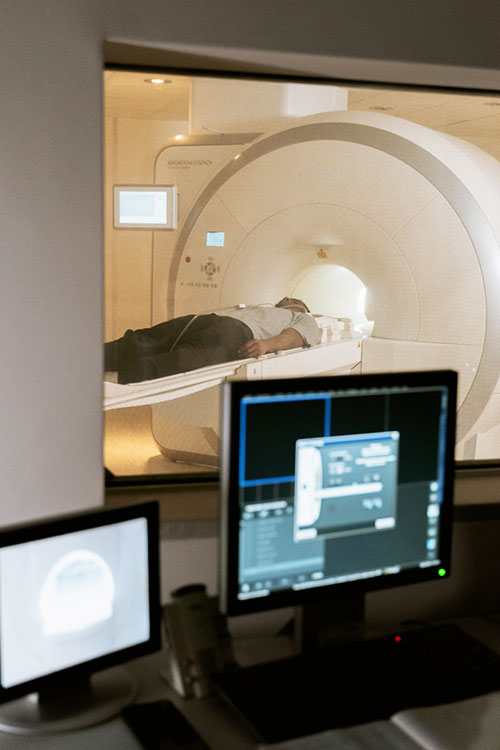What are Ear and Skull Base Tumors?
Ear and skull base tumors are abnormal growths that develop in or around the structures of the ear and the base of the skull. These tumors can be benign (non-cancerous) or malignant (cancerous). They may arise from various structures, including the hearing and balance nerves, facial nerves, or other less common sites. Although these tumors are rare, they can cause significant problems due to their location near critical nerves and structures.
Tumor Types
There are several types of ear and skull base tumors. Here are a few examples:
Acoustic Neuroma (Vestibular Schwannoma): This is a benign tumor that develops on the nerves leading from the inner ear to the brain. Symptoms may include hearing loss, tinnitus (ringing in the ear), and balance difficulties.
Glomus Tumors: These are usually benign and arise from the jugular bulb or middle ear. They can cause symptoms like hearing loss, pulsatile tinnitus, and lower cranial nerve dysfunction.
Meningiomas: These are often benign tumors that originate from the coverings of the brain and can involve the skull base.
Epidermoid Cysts: This is a benign growth of skin cells that may originate in the middle ear and spread to involve the skull base.
Paragangliomas: These are rare, typically benign tumors that can occur in the head and neck region, including the skull base.
Lower cranial nerve schwannomas: These are very rare, benign tumors of nerve fibers that are involved with speech and swallowing.
Malignancies of the ear and skull base: While rare, a variety of cancerous tumors may occur in the area of the ear and lateral skull base.

Symptoms
The type and severity of symptoms depend on the tumor size, type, and location. Some of the more common symptoms may include:
- Hearing loss (often single-sided)
- Tinnitus
- Vertigo or balance problems
- Vision problems
- Facial weakness, twitching, numbness or pain
- Headaches
- Nausea and vomiting
- Seizures
- Swallowing or voice difficulties
Diagnosis
Diagnosis of ear and skull base tumors often involves a combination of physical examination, hearing tests, and imaging studies. Advanced imaging techniques like Magnetic Resonance Imaging (MRI) or Computed Tomography (CT) scans are frequently used to determine the size and location of the tumor. In some cases, a biopsy may be recommended to confirm the diagnosis.
Treatment Options
The treatment of skull base tumors depends on the type, location, size, and extent of the tumor, as well as the patient’s overall health and preferences. Options may include:
- Observation: Small, slow-growing tumors that do not cause symptoms may be closely monitored with regular imaging and physical exams.
- Surgery: Surgical removal of the tumor may be the preferred treatment option if the tumor is large, growing rapidly, or causing significant symptoms. The type of surgery will depend on the location and size of the tumor.
- Stereotactic radiosurgery (SRS): SRS is a type of radiation therapy used to treat brain tumors, including vestibular schwannomas (also known as acoustic neuromas). One of the most commonly used devices for SRS is the Gamma Knife. Despite its name, Gamma Knife treatment does not involve any surgical incision. Instead, it uses highly focused gamma rays to treat the tumor. Gamma Knife radiosurgery is a type of radiation therapy that focuses precise, high-dose radiation at the tumor, while largely sparing the surrounding healthy tissue. The treatment is performed in a single session, with patients typically able to return home the same day.
In some cases, a combination of these treatment options may be used. It’s important to discuss each treatment option’s potential benefits and risks with one of our doctors to determine the best approach for your specific case.